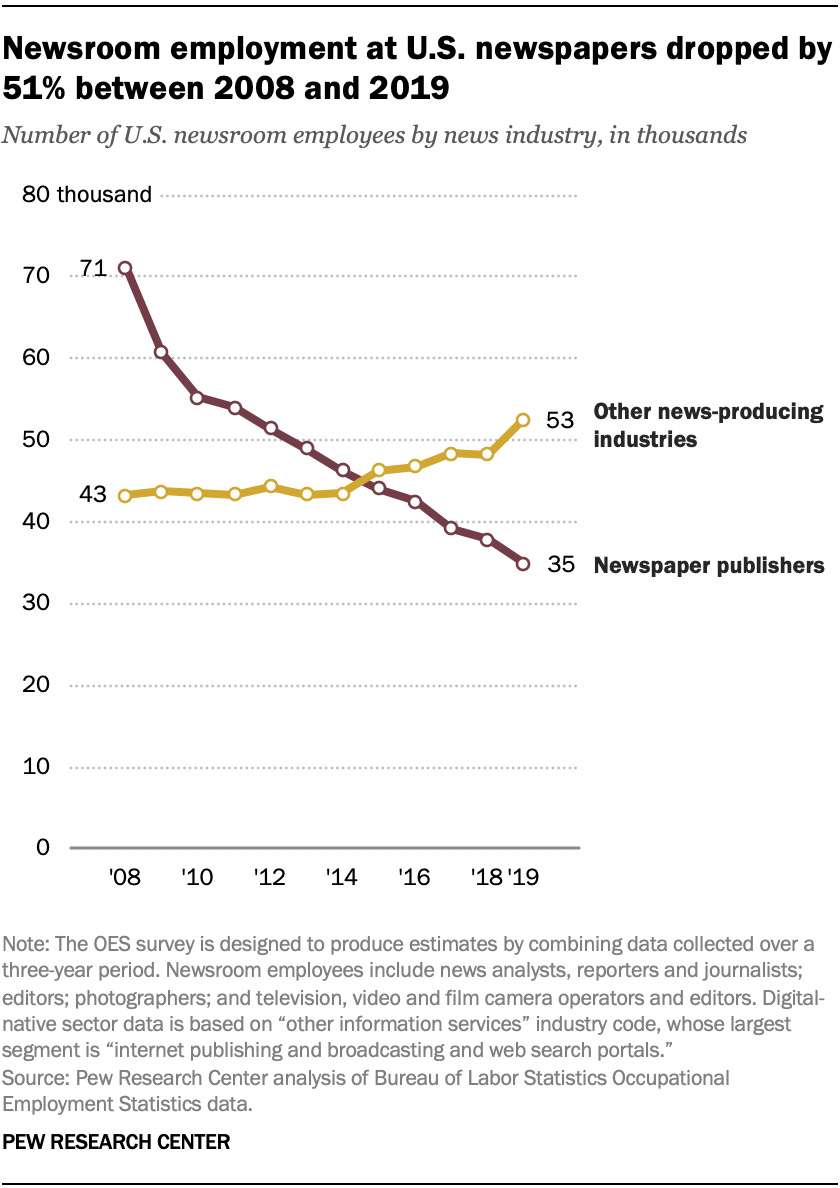Your industry may be dying (but that's okay)
There’s a new, uncrowded opportunity on the other side of massive change. But it won't be fast, easy, or clear how to take it.
“This industry is dying.”
Those were the words of my first journalism professor, in my first ever college class.
Several of her colleagues repeated a version of this line over the following semesters And for good reason. Blogs and online news were stealing massive traffic from traditional media. Print subscriptions were plummeting. People started getting news from—gulp—social media.
Though the message was discouraging for an optimistic 18-year old, these professors were prescient, or at least pragmatic. This was in 2006-2008. While many people had started shifting their media consumption online, few outside the industry could see the tidal wave of change coming to the business models.
So, I don’t fault those professors for suggesting that my major was becoming obsolete. But I do wish they’d had the foresight to say one more thing. Something like:
“Yes, this industry is dying...but something will replace it. The same tools killing traditional news will allow you to build a career in new media. What people think of as silly internet hobbies today will become the most powerful information channels of the next decade. You can use the same skills you learn in this class to create your own media company, and no one can stop you.”
Because this was also true at the time.
Right when the sky was falling for print, tv, and radio news, independent bloggers were building followings. Average Joes were conducing citizen journalism on Twitter. A fledging startup named YouTube now let anyone to create their own channel for news of any kind (or cat videos, of course).
So why didn’t we all run like 49ers to this generational career opportunity?
Let’s remember the rest of the context. In the mid-2000s, influencers didn’t exist. Soccer moms weren’t getting paid to shill toothpaste on Instagram. Mr Beast wasn’t trying to sell your kids convenience food. Podcasters weren’t millionaires.
In other words, yes, there was a massive, once-in-a-lifetime opportunity amidst a time when a legacy industry watched itself wither. But to capitalize, you had to have enough faith to push past the doubters, platform changes, and cries of “fad.”
The newest games have less competition...because everyone else thinks you’re silly for playing in the first place.
It turns out that the old cliche when one door closes, another opens is true. But it’s incomplete. Because both doors lead to a room. The door that closed once led to a bright room full of familiar faces. The one that opens leads to an uncertain abyss. What’s harder is that the people in the old room eventually make their way over through the new door, but the timeline is rarely clear, and they’ll try to convince you that they were in the new room all along. Ok, enough of the door metaphor.
The old way, the new way, and the hard path between
I was inspired to write this post after seeing Hannah Goefft tell entry-level employees that they’re the best positioned people to take advantage of AI. And I think its important to acknowledge that the conversation has three parts: the old way, the new way, and the hard path between them.
If you’re hearing about the prospect of a massive change in your industry, it might be 100% true. My journalism professors were certainly right, almost 20 years ago.
There’s probably a new, uncrowded opportunity on the other side of that massive change. But that doesn’t mean it will be fast, easy, or clear how to take it.
Ironically, I ditched my journalism major, but eventually found my way into “media” via teaching—writing blogs, recording podcasts, and posting ideas about education. That opened the door to my work today as a software product manager, where once again, I hear calls of “this job will be obsolete” and “software as we know it will disappear.”
What do I think this time?
Yes, those calls may be right. If so, it’ll take work, but we’ll figure it out.


I've been thinking about this all the time (mostly mourning my own career trajectory, but optimistic about what's next for me and my kiddos' futures)